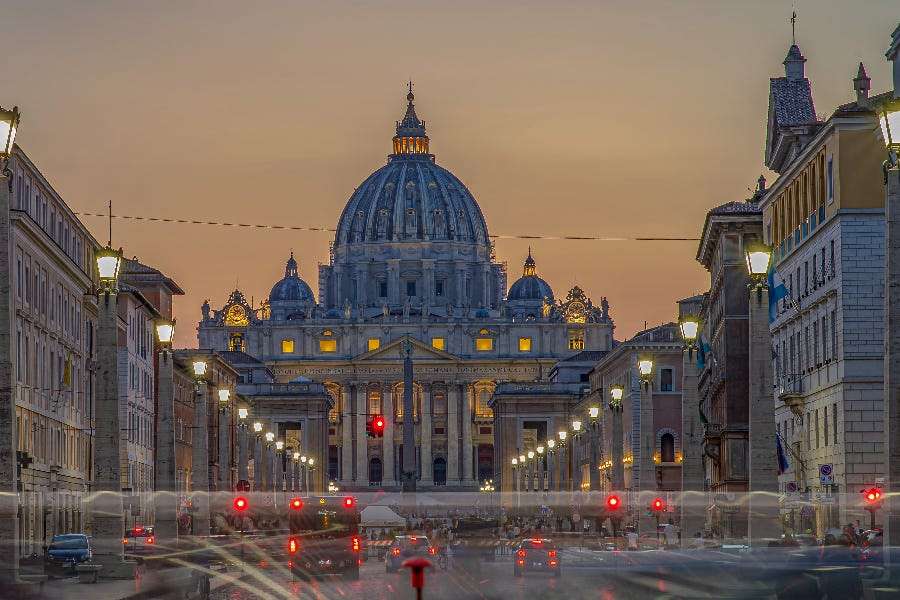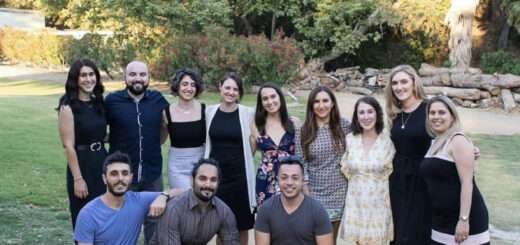Vatican signs new collaboration agreements with Azerbaijan

The agreements are the latest development in the controversial relationship between the Holy See and the Azeri regime.
The Vatican signed several new collaborative agreements with Azerbaijan’s government, the latest in a series of controversial arrangements with a government accused of ethnically cleansing Christian minorities within its territory.
St. Peter’s Basilica, seen from Rome’s Via della Conciliazione. Ernesto Spaziani via Wikimedia (CC BY-SA 4.0).
Azerbaijan signed agreements with the Bambino Gesù Children’s Hospital and the Vatican Apostolic Library and Apostolic Archives, alarming critics who accuse the Azeri regime of human rights abuses against the Armenian minority and of practicing “caviar diplomacy” by using its cultural and economic power to shape Vatican policy in the South Caucasus region.
A September 9 agreement between the Azeri Ministry of Health and the Bambino Gesù Hospital will enhance collaboration in specialized pediatric training, genetic diagnostics, and clinical management of complex cases. Azeri media reported that the initiative was also supported by the Secretariat of State.
A day later, a representative of the Heydar Aliyev Foundation – led by Azerbaijan’s first lady and widely considered the “caviar diplomacy” arm of the Azeri regime – signed an agreement with the Apostolic Library and the Apostolic Archives, by which Azerbaijan will work on the digitalization of documents related to Azeri history in the Vatican archives, as well as on cooperation in research, workshops, exhibitions, and bibliographic initiatives.
The agreements are the latest development in a long-standing relationship between the Holy See and the controversial Azeri regime.
The April 10 conference was entitled “Christianity in Azerbaijan: History and Modernity.”
Armenian activists and Church leaders called the event part of a broader campaign to erase Armenian Christian heritage from disputed territories.
Promotional materials for the conference included distinctly Azeri reads on West Asian history, including a display of the medieval Armenian monastery of Dadivank, with the claim that it belonged to the “Caucasian Albanian” culture, an Azeri government claim widely disputed by historians.
While the conference talks were not published or streamed, a published summary of one talk claimed that Armenians destroyed Caucasian Albanian monuments in the disputed Karabakh region to “falsely present them as Armenian,” and charged that Armenians are “aggressive settlers” in the region, and that Yerevan, Armenia’s capital, is Azeri.
“This has no basis in reality. They say these are Caucasian Albanian churches, but Caucasian Albanians disappeared in the 8th century,” Orthodox Archbishop Vicken Aykazian, ecumenical director of the Eastern Diocese of the Armenian Apostolic Church of America, told The Pillar back in April.
Despite these controversies, the conference received a letter of congratulations from Cardinal Claudio Gugerotti, prefect of the Dicastery for the Eastern Churches.
Azerbaijan, a Muslim-majority country of about 10 million people, has long disputed control of the region of Nagorno-Karabakh with neighboring Armenia, a Christian-majority country with fewer than 3 million citizens.
Historically, Armenia has deep Christian roots. In 301, the Kingdom of Armenia was the first country to become an officially Christian nation.
Fighting over Nagorno-Karabakh, which is internationally recognized as part of Azerbaijan but had been governed by ethnic Armenians since the 1990s, has erupted frequently since the end of the Soviet Union.
Many churches, religious sites, and cemeteries were reportedly destroyed or desecrated in the aftermath of the 2023 Azerbaijani offensive.
Church observers have expressed concern about the Vatican’s willingness to engage publicly with the Azeri government, suggesting it could be falling prey to “caviar diplomacy,” a term used to describe the Azeri approach of using cultural restorations, economic investments, and other strategies to curry favor with foreign officials.
Aykazian, ecumenical director of the Eastern Diocese of the Armenian Apostolic Church of America, told The Pillar in April: “The Vatican has been receiving money from Azerbaijan for some time — the main example being the restoration of St. Paul Outside the Walls, which was funded by Azerbaijan.”
In contrast, Azeri officials present their outreach to the Vatican as an effort to strengthen bilateral relations and demonstrate Azerbaijan’s commitment to interreligious and intercultural dialogue. They characterize the country’s support for Vatican restoration projects as an expression of respect for humanity’s common heritage.
This is not the first time the Vatican’s links to Azerbaijan have drawn attention.
In August 2024, L’Osservatore Romano published an article that repeatedly described traditionally Armenian regions, churches, and monasteries as “Caucasian Albanian,” a term referring to an ancient Christian culture in the region, used by Azerbaijan to justify its historical claims over Nagorno-Karabakh.
“The article denied the fact that there were any Armenian churches in Karabakh, which is simply a lie. Armenians, including Armenian Catholics, got furious, but things haven’t changed,” Bishop Aykazian told The Pillar.
Months before the 2020 offensive in Nagorno-Karabakh, Azerbaijan’s First Lady Mehriban Aliyeva was awarded the Order of Pope Pius IX at the Vatican.
Ilqar Mukhtarov, Azerbaijan’s ambassador to the Holy See, received the same distinction on April 3, 2025.
The Heydar Aliyev Foundation lists the Vatican Apostolic Library and the Vatican Museums among its partners and several restoration projects that it is supporting at the Vatican.
The list includes the Roman Catacombs of Marcellinus and Peter, the Catacombs of Commodilla, and the Catacombs of San Sebastiano, the restoration of a statue of Zeus in the Vatican Museums, the restoration and translation of more than 3,000 books and 75 manuscripts in the Vatican Apostolic Library, the restoration of a bas-relief with the encounter between Pope Leo the Great and Attila the Hun in St. Peter’s Basilica, and the restoration of the Basilica of St. Paul Outside the Walls.
According to Italian outlet Irpi Media, the donations amounted to 640,000 euros (around $730,000). But an Azeri official said publicly in 2020 that the figure was “over 1 million euros.” Many of the restoration works came after 2020, suggesting the actual sum could be even higher.
One of the largest restoration projects was unveiled in 2024, when the Vatican City State Governorate announced an agreement between the Basilica of St. Paul Outside the Walls and the Heydar Aliyev Foundation.
Observers suggest links between the Vatican and the former Soviet republic were strengthened thanks to Cardinal Claudio Gugerotti, who is now prefect of the Dicastery for Eastern Churches.
Gugerotti was the apostolic nuncio to Azerbaijan, Armenia, and Georgia from 2001 to 2011.
The 2011 bilateral agreement between the Holy See and Azerbaijan was negotiated by Gugerotti. Azerbaijan then appointed an ambassador to the Holy See.
During Gugerotti’s service as nuncio, Azeri authorities began to have frequent meetings, both in Azerbaijan and the Vatican, with Holy See officials, among them then-Secretary of State, Cardinal Tarcisio Bertone, and Cardinal Gianfranco Ravasi,the then-president of the Pontifical Council for Culture.
According to Irpi Media, Ravasi is another central figure connecting Azerbaijan and the Vatican.
Ravasi opened the doors to Azeri-funded restoration projects in the Vatican with a 2012 agreement to restore Roman catacombs, as well as another to translate and restore manuscripts in the Apostolic Library.





